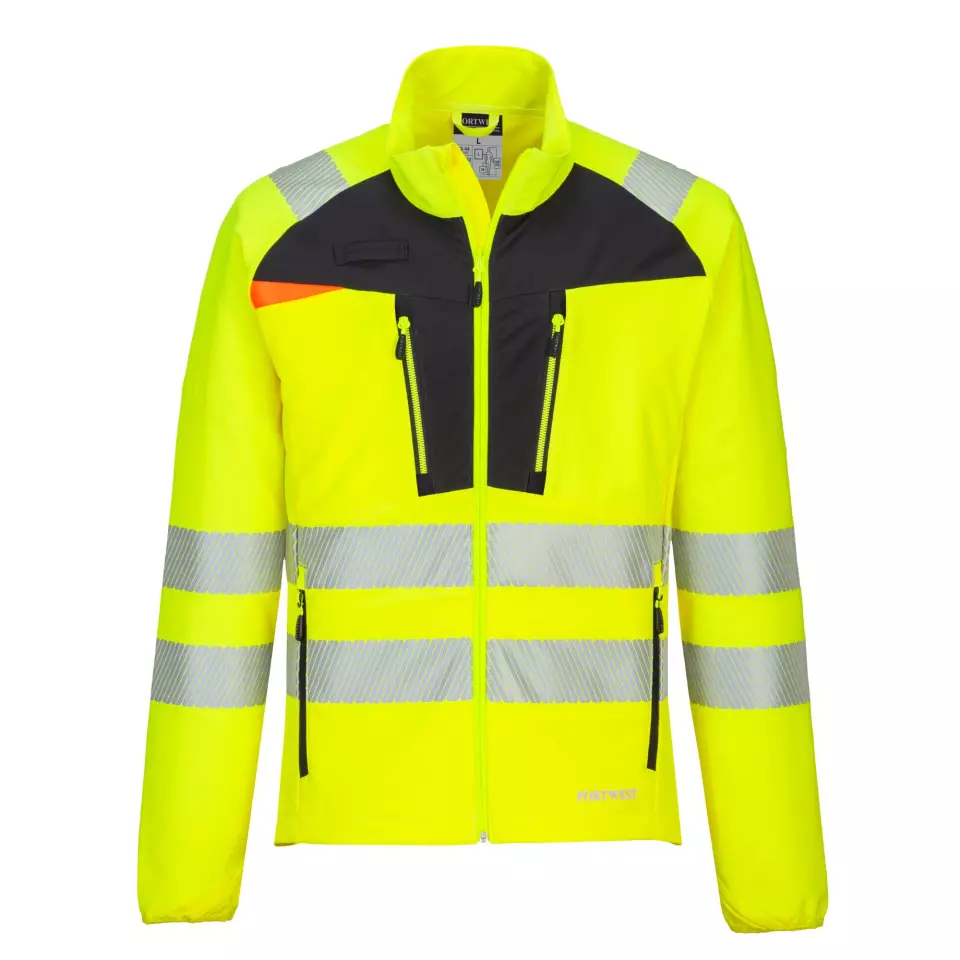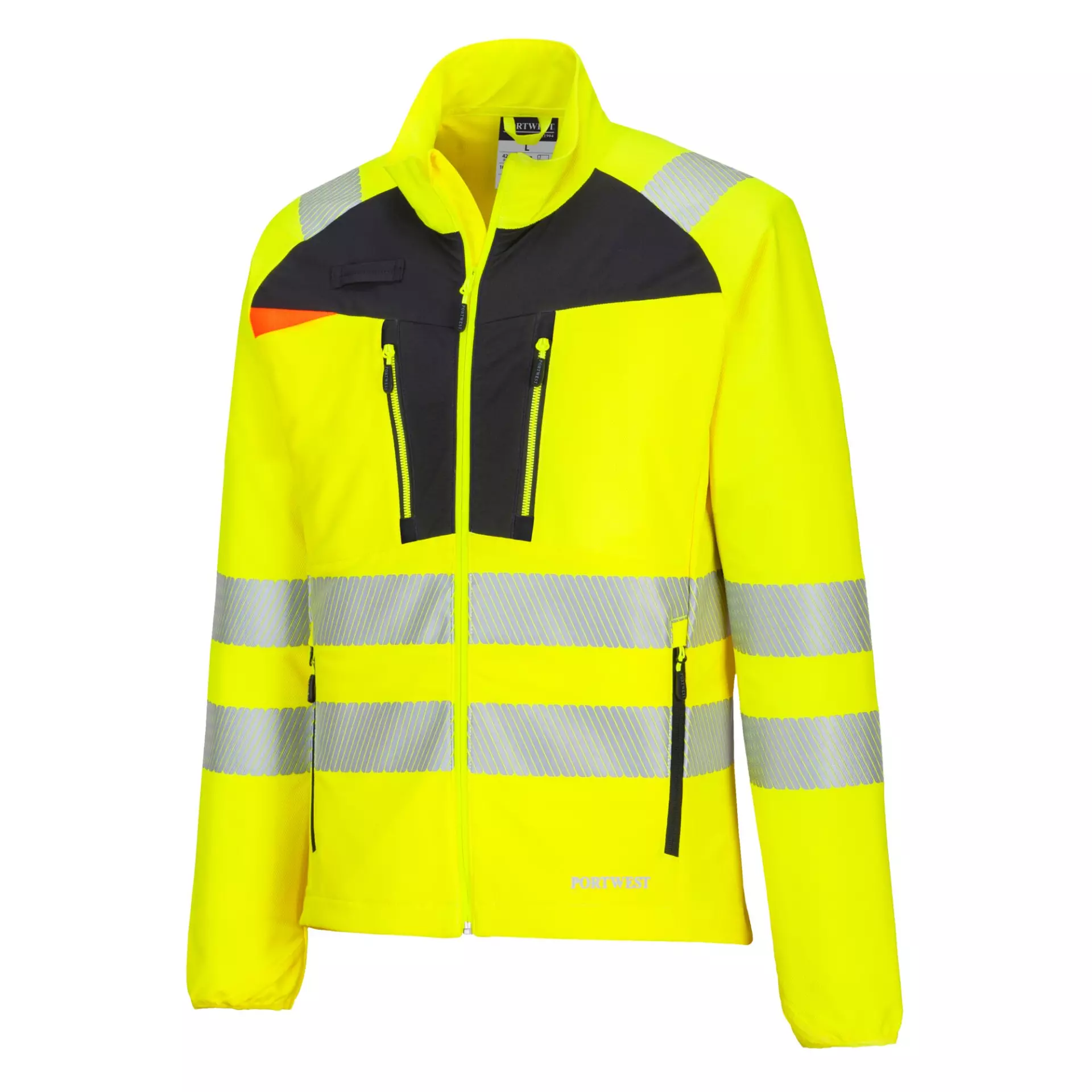


Features You'll Love

Sleeve Length · Long Sleeve
Zipper ·
EN 20471 · Reflective Strip Area Grade 2
Determines the length of sleeves, affecting protection from hazards and temperature regulation in different work environments.
This garment provides an intermediate level of visibility for use in moderate-risk environments. It is suitable for work near traffic with speeds up to 60 km/hour, featuring a specified area of fluorescent material and reflective strips.

Shirt Features · Long Sleeve
Defines the overall design and construction of the work shirt, including sleeve length, collar type, and closure method, affecting comfort and functionality.

Collar Style · Stand-up
The design and shape of the neckline, affecting comfort, neck coverage, and how the shirt layers with safety equipment or other work gear.
Portwest
DX4 Hi-Vis Lightweight Mid Layer, Yellow/Black
DX4 Hi-Vis Lightweight Mid Layer, Yellow/Black
4.8 / 5
84,61 €
Choose size
Free delivery
Features You'll Love

Sleeve Length · Long Sleeve
Zipper ·
EN 20471 · Reflective Strip Area Grade 2
Determines the length of sleeves, affecting protection from hazards and temperature regulation in different work environments.
This garment provides an intermediate level of visibility for use in moderate-risk environments. It is suitable for work near traffic with speeds up to 60 km/hour, featuring a specified area of fluorescent material and reflective strips.

Shirt Features · Long Sleeve
Defines the overall design and construction of the work shirt, including sleeve length, collar type, and closure method, affecting comfort and functionality.

Collar Style · Stand-up
The design and shape of the neckline, affecting comfort, neck coverage, and how the shirt layers with safety equipment or other work gear.
Product description
This high-visibility work jacket combines lightweight construction with 4-way stretch nylon fabric for optimal mobility and comfort. The body-mapped design features raglan sleeves and HiVis Tex Pro segmented tape, providing fluid movement while maintaining visibility standards. With 40+ UPF protection blocking 98% of UV rays and multiple storage solutions including 6 pockets and radio loop, this jacket meets multiple international safety standards including EN ISO 20471 Class 2 and ANSI/ISEA 107 certifications.
Product Features:
- 4-way stretch fabric for ease of movement and added comfort
- Elasticated cuffs for secure fit with thumb loops
- 6 pockets including zipped chest pockets, side zip pockets, and internal pockets for secure storage
- Radio loop for easy clipping and detachable ID pocket
- Slim fit design with curved back hem for added protection
Technical Details:
- High stretch, highly durable nylon fabric with body-mapped design
- Raglan sleeves with HiVis Tex Pro segmented tape
- Heat applied segmented reflective tape for added visibility
- 40+ UPF rated fabric to block 98% of UV rays
- Certified to EN ISO 20471 after 50x washes
Standards:
- EN ISO 20471 Class 2
- RIS 3279 TOM Issue 2
- ANSI/ISEA 107 Type R Class 2
- ANSI/ISEA 107 TYPE P CLASS 2
- CE certified and UKCA marked

